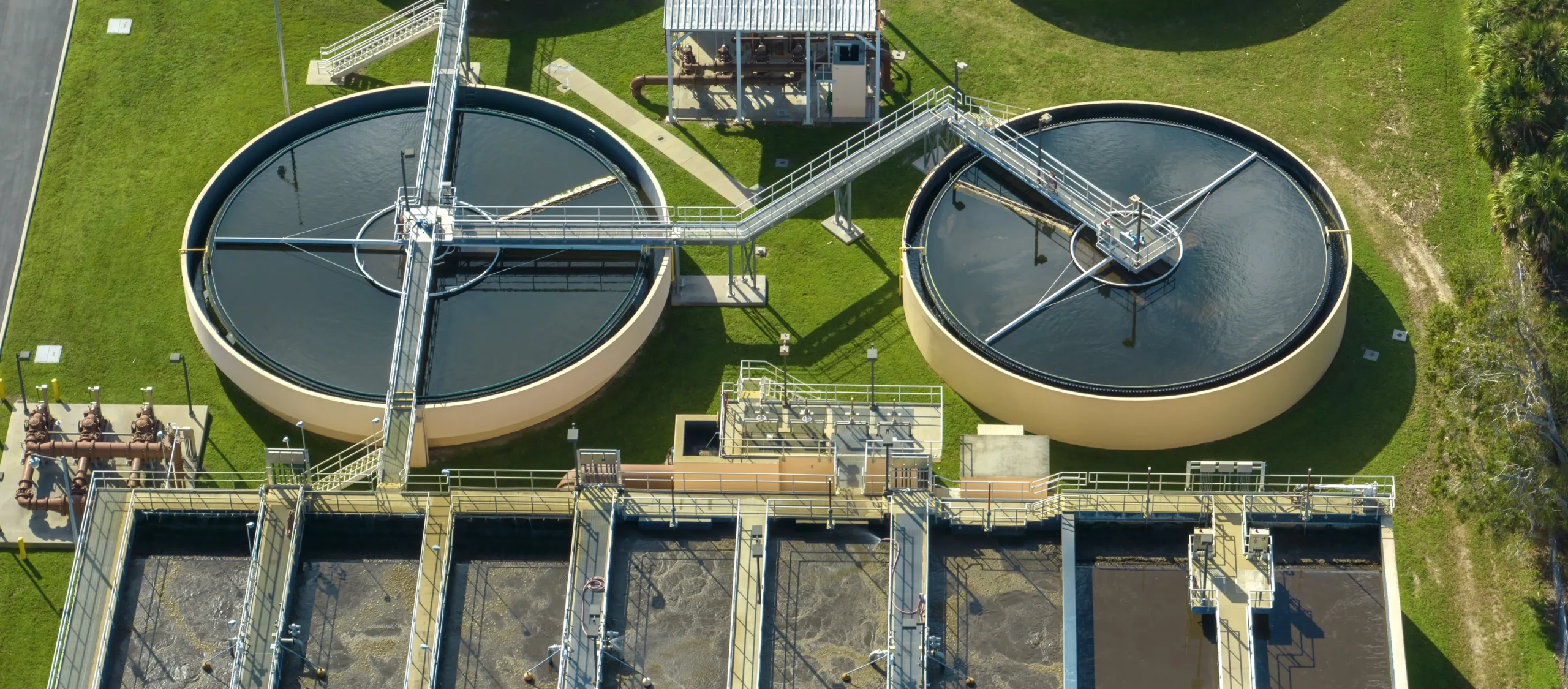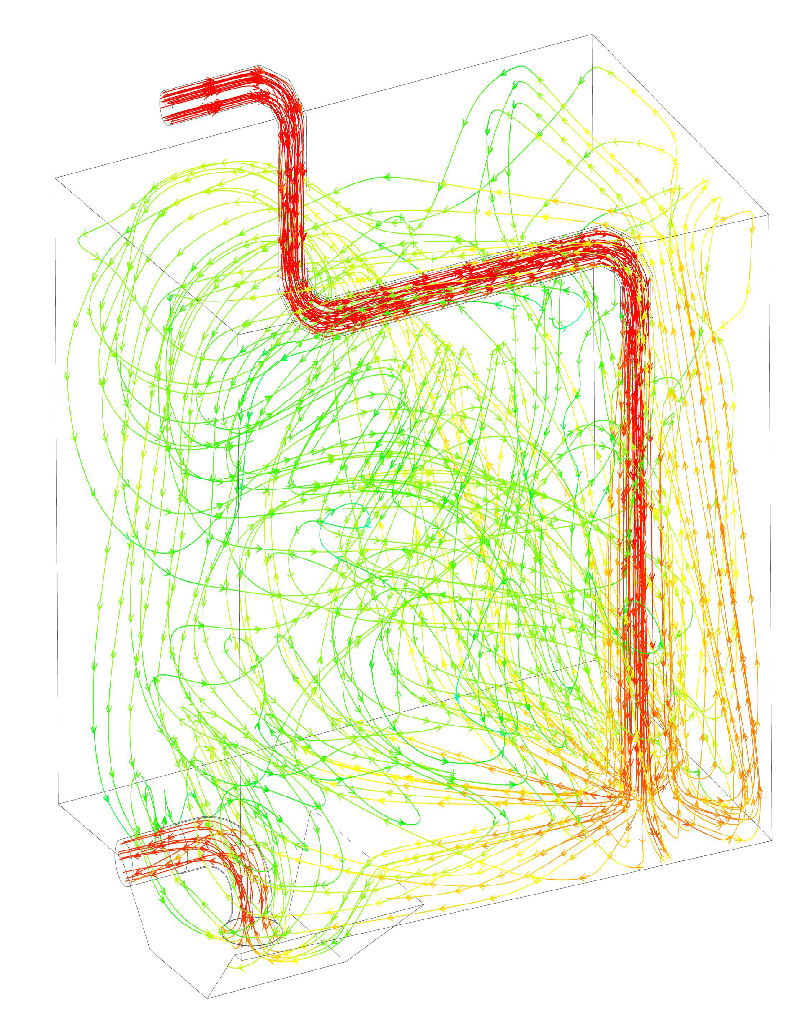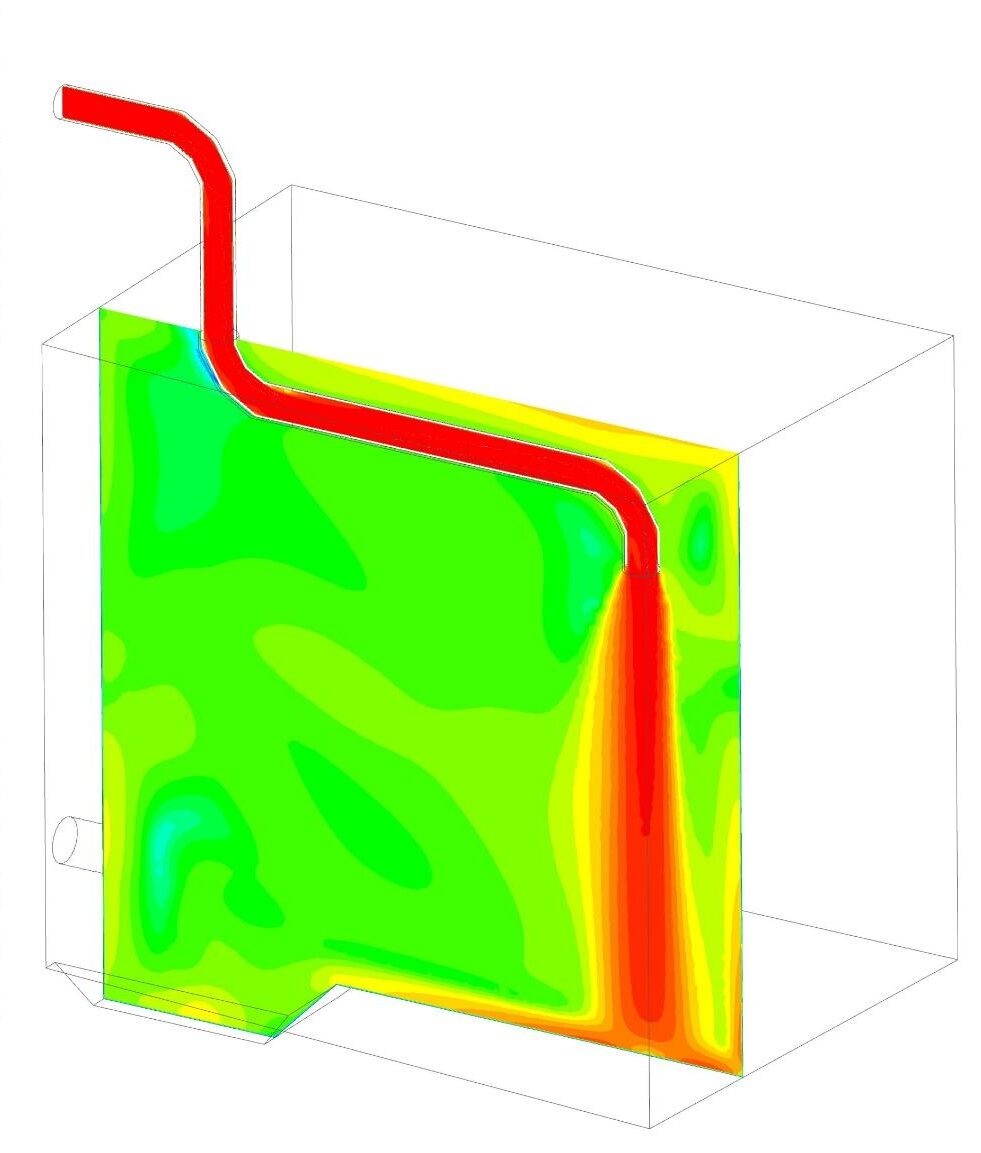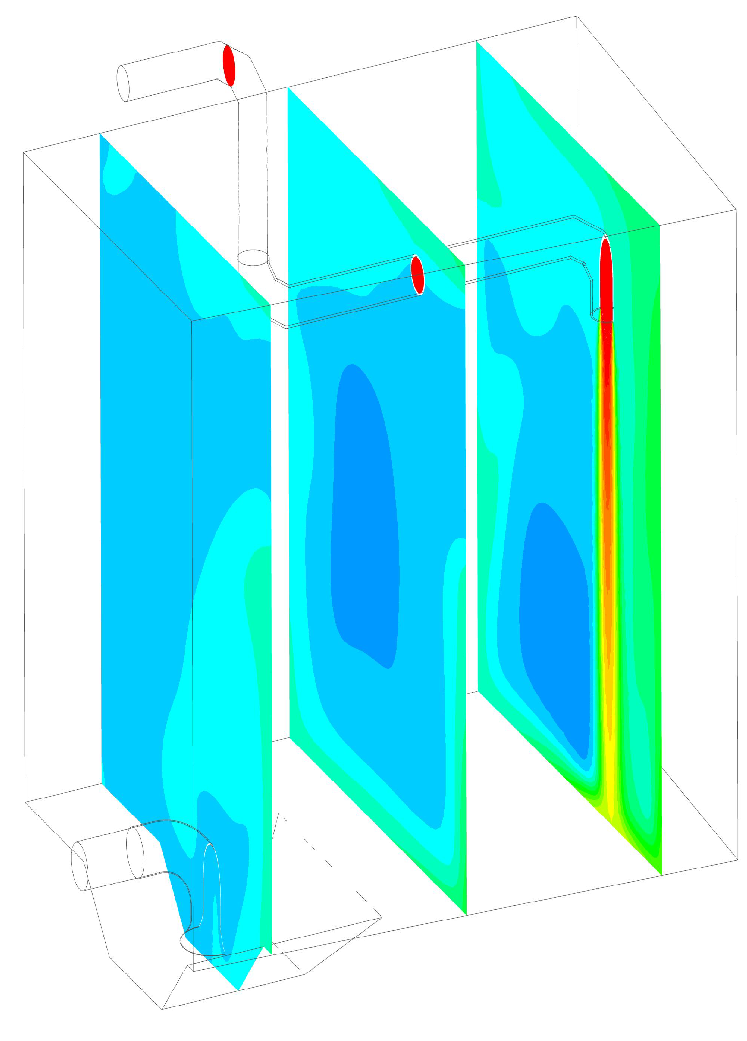Introduction
A chlorine contact tank plays a critical role in water treatment facilities by ensuring adequate disinfection through chlorine contact. Effective mixing and flow distribution within the tank is essential for achieving uniform chlorine dosage and maximizing disinfection efficiency.
This case study utilizes Computational Fluid Dynamics (CFD) analysis to evaluate and enhance the flow distribution and mixing processes within the tank. The goal is to identify and address any inefficiencies in the current design, thereby improving the overall performance of the disinfection system.
Objective
Here are the key objectives of the study:
- Assess whether proper water flow circulation is occurring inside the tank by studying the velocity profiles because of incoming and outlet flows.
- Evaluate the mixing efficiency inside the tank by analyzing the concentration profiles of dosages, including Sodium Hypochlorite and Ammonium Sulphate entering from the inlet pipe.
- To achieve these objectives, the CFD analysis was carried out using Ansys Fluent CFD software.
- Parameters such as velocities and dosage concentrations will be studied to ensure optimal performance of the tank.
Modeling and Analysis
- A 3D CFD model of a Chlorine contact tank was created, incorporating structural obstructions, inlets, and outlets.
- Boundary conditions were set with precise values to accurately reflect real operational parameters, ensuring reliable simulation results.
- Simulations were conducted to evaluate flow distribution and mixing efficiency.
- The results confirmed the effective distribution of flow and proper mixing of Sodium Hypochlorite and Ammonium Sulphate throughout the tank.
Conclusion
The CFD analysis assessed the velocity and mixing profiles in the Chlorine contact tank and the results show that:
- High-velocity incoming flow is well-distributed throughout the tank and exits effectively.
- Sodium Hypochlorite mixes thoroughly within the tank, reaching most areas before exiting.
- Ammonium Sulphate also mixes well, ensuring its distribution throughout the tank.
Overall, the analysis confirms that both flow distribution and mixing of dosages are effective in the tank.




